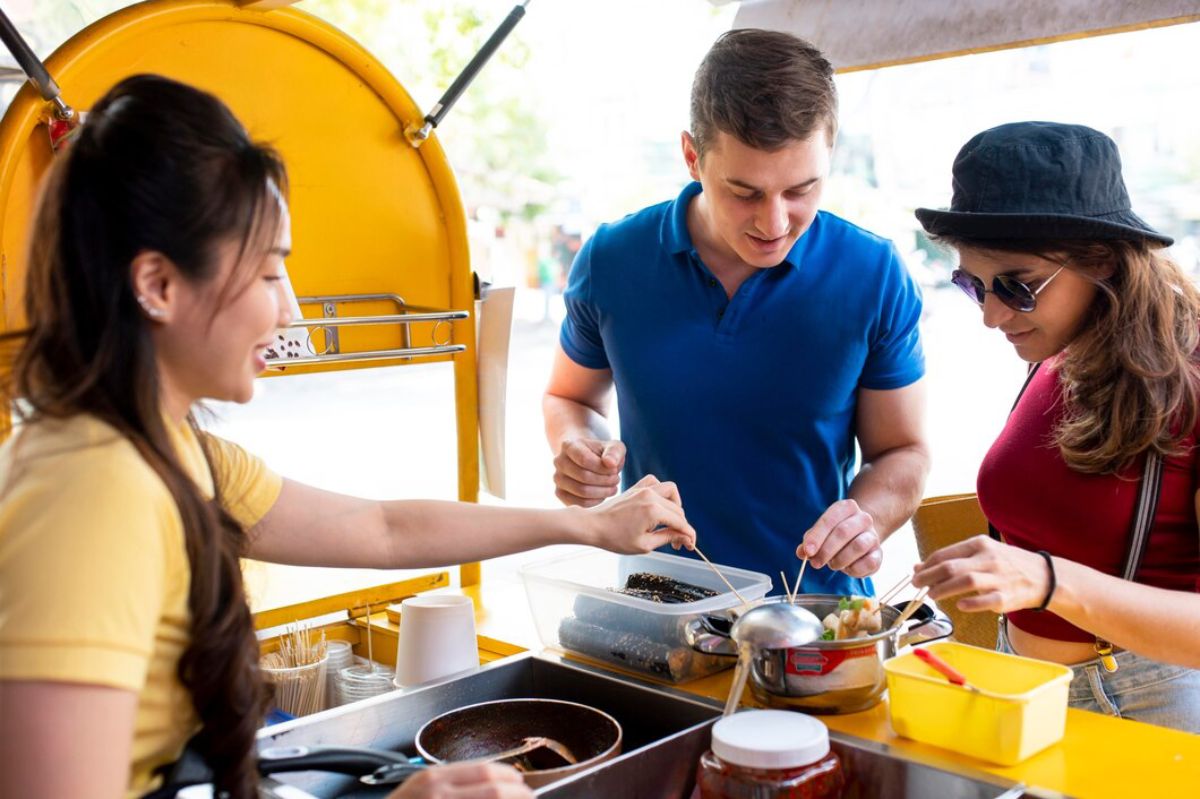
The Evolution of Street Food Culture in Different Countries
Street food plays a key role in culinary traditions around the globe. It’s a tasty, quick, and budget-friendly way to enjoy local flavours. Street food has changed over centuries, shaped by trade, migration, urban growth, and new ideas. Today, street food culture is alive and well. It unites people through shared food experiences.
The history of street food dates back to ancient civilisations, where vendors sold ready-to-eat meals in bustling markets. Over time, the evolution of street food has reflected cultural exchanges and innovations. From Asia’s vibrant night markets to Latin America’s food carts, global street food culture offers diverse, authentic flavours. Discover how street food continues to shape culinary landscapes worldwide. Read our blog to know more.
The Early History of Street Food

Here is what you need to know about the early history of street food:
Ancient Civilisations and the Origins of Street Food
The history of street food dates back to ancient times. Street vendors appeared in ancient Greece around 500 BC. They sold small fried fish. In ancient Rome, Thermopolis street food stalls offered quick meals. Workers, who often had no kitchens, could buy bread, cheese, and wine there.
In the Middle East, open-air markets buzzed with food. Merchants sold falafel, kebabs, and other tasty treats.
Medieval and Renaissance Street Food
During the Middle Ages, street food was vital in feeding urban populations. In Europe, vendors sold meat pies, roasted nuts, and fish in marketplaces. In the 16th century, London’s Thames-side stalls became famous for selling oysters, which were then typical food for the working class.
In Asia, busy street food markets thrived. In Japan, yatai (mobile food stalls) gained popularity. The Edo period (1603–1868) saw an expansion of street food, with dishes like tempura and sushi emerging as fast-food options.
The Impact of Colonisation and Trade on Street Food

Here is how colonisation impacted the trade of street food:
The Influence of the Silk Road and Spice Trade
Trade routes played a significant role in shaping street food. They helped move people, ingredients, and cooking techniques. The Silk Road facilitated the exchange of spices, grains, and culinary traditions between Asia, the Middle East, and Europe.
Chilli peppers came from the Americas to Asia in the 16th century. Portuguese traders brought them over, changing street food in India, Thailand, and China and creating spicier dishes.
European Colonisation and Fusion Cuisine
Colonialism played a key role in shaping global street food culture. European colonisers brought new ingredients and cooking methods to different regions. For example:
- The Portuguese introduced tempura to Japan.
- The Spanish brought wheat, beef, and dairy to Latin America, influencing dishes like tacos and empanadas.
- French colonial influence in Vietnam led to banh mi, a fusion of French baguette and Vietnamese fillings.
The Golden Age of Street Food in the 19th and 20th Centuries
Here is a glimpse of the golden age of street food in the 19th and the 20th centuries:
Industrialisation and Urbanisation
As cities grew during the 19th and 20th centuries, street food became even more essential for feeding the working class. In the United States, hot dog carts became popular in New York City, providing quick and affordable meals to labourers.
In Asia, street food culture expanded dramatically. Bangkok’s floating markets, Hong Kong’s dai pai dongs (open-air food stalls), and Mumbai’s vada pav vendors became icons of local cuisine.
Post-War Globalisation and Fast Food Competition
After World War II, globalisation boosted cross-cultural exchange, bringing new street food trends. However, the rise of fast food chains posed challenges for traditional street food vendors. Many street food cultures have adapted, adding modern elements while maintaining authenticity.
The Diversity of Global Street Food Culture Today
The global street food culture today is diverse. Here is a glimpse of how:
Asia: A Street Food Haven
Asia is home to some of the world’s most diverse and vibrant street food scenes.
China
- Jianbing : A popular Chinese breakfast crepe filled with egg, scallions, and crispy wonton.
- Chuan’r : Grilled lamb skewers seasoned with cumin and chilli.
Thailand
- Pad Thai : Stir-fried noodles with tofu, shrimp, and peanuts.
- Okonomiyaki : A spicy green papaya salad.
Japan
- Takoyaki : Octopus-filled savoury dough balls topped with bonito flakes.
- Som Tam : A savoury pancake made with cabbage, batter, and various toppings.
Europe: Traditional and Modern Influences
Street food in Europe blends historical traditions with contemporary innovations.
United Kingdom
- Fish and Chips : A classic British dish of battered fish with fried potatoes.
- Cornish Pasty : A savoury pastry filled with meat and vegetables.
Germany
- Currywurst : Sausage topped with spiced ketchup and curry powder.
- Pretzels : A popular snack with a chewy, salted crust.
Italy
- Arancini : Fried rice balls stuffed with cheese or ragu.
- Porchetta Sandwiches : Slow-roasted pork served in a crusty roll.
Latin America: Bold Flavours and Indigenous Roots
Indigenous ingredients and colonial history heavily influence Latin American street food.
Mexico
- Tacos al Pastor : Marinated pork tacos cooked on a vertical spit.
- Elotes : Grilled corn on the cob slathered with mayonnaise, cheese, and chilli powder.
Brazil
- Coxinha : Deep-fried dough stuffed with shredded chicken.
- Acarajé : Black-eyed pea fritters filled with shrimp and spicy sauce.
Peru
- Ceviche : Raw fish cured in lime juice with onions and chilli.
- Anticuchos : Grilled beef heart skewers.
Middle East & Africa: Rich Spices and Hearty Snacks
The Middle East and Africa have a rich street food tradition closely linked to their cultural practices
Turkey
- Doner Kebab : Rotisserie-cooked meat served in a wrap or sandwich.
- Simit : A sesame-crusted bread similar to a bagel.
Egypt
- Koshari : A hearty dish of lentils, pasta, rice, and tomato sauce.
- Falafel : Deep-fried chickpea balls served in pita bread.
Nigeria
- Suya : Spicy grilled meat skewers coated with peanut seasoning
- Puff-Puff : Fried dough balls, similar to doughnuts.
The Modern Revival of Street Food

Street food has revived in the modern era. Here’s how:
Food Trucks and Gourmet Street Food
Street food culture has come back strong in the 21st century. Food trucks and pop-up markets now serve gourmet twists on classic street foods. Cities like Los Angeles, London, and Sydney boast lively street food scenes. They offer fusion dishes like Korean BBQ tacos and sushi burritos.
Sustainability and Ethical Eating
Many street food vendors focus on sustainability. They use locally sourced ingredients, reduce waste, and offer plant-based options. This shift aligns with global food trends towards healthier, more ethical eating.
The Influence of Social Media
Platforms like Instagram and TikTok have made street food vendors famous worldwide. Now, street food is a global sensation. Viral food trends, such as rainbow bagels and birria tacos, have contributed to the continued evolution of street food.
The Ever-Changing Street Food Landscape
The evolution of street food reflects the dynamic nature of culinary traditions worldwide. Street food started with simple vendors in ancient markets. It has grown into the gourmet food truck trend we see today. Global street food culture is still alive and well. Street food unites us. Whether exploring its history or trying fusion dishes, it celebrates diverse flavours and cultures in every bite.


